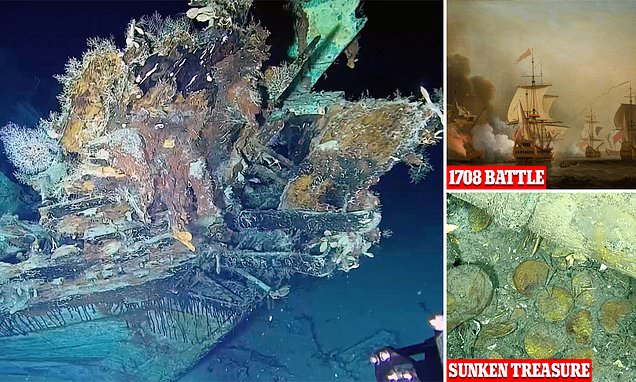The Lost Treasure of the San José
More than 300 years ago, a significant naval skirmish unfolded off the coast of Cartagena, Colombia, involving English forces targeting a Spanish treasure fleet. This dramatic encounter led to the demise of the San José, a galleon believed to be transporting a staggering $20 billion worth of gold, silver, and precious jewels. Since that fateful day, the sunken vessel has continued to capture the imagination of treasure hunters, historians, and nations alike, all vying for a piece of its opulent bounty.
The Historical Context
The attack on the San José occurred during a time when European powers were fiercely competing for control of trade routes and colonial territories in the Americas. The Spanish galleon was laden with riches amassed from the New World, making it a prime target for pirates and rival nations. As it sailed toward Spain, laden with coins and artifacts, the ship succumbed to the English onslaught and ultimately sank into the depths of the Caribbean.
Claims to the Sunken Treasure
Over the years, various nations and entities have laid claim to the treasure of the San José, representing a wide array of interests. These claims stem from historical treaties, ancestral ties, and even modern-day recovery attempts. The treasure has sparked debates over ownership rights, with implications for archaeology and heritage conservation.
- Colombia: As the nation where the wreck rests, Colombia asserts its claim based on territorial rights.
- Spain: Spanish authorities argue that the treasure belongs to Spain due to its historical ties and ownership when the ship was lost.
- Various Indigenous Tribes: Some indigenous groups have claimed the treasure based on cultural perspectives and historical connections to the artifacts being raised.
Treasure Recovery Efforts
Despite being the subject of interest for centuries, the treasure of the San José remains elusive. Advanced technology has aided in pinpointing its location, but legal battles and ethical considerations about recovering the artifacts have complicated actual recovery efforts. The intricate balance of respecting cultural heritage while pursuing valuable treasures continues to challenge those involved.
The Quest for the San José
As maritime archaeology evolves, efforts to unearth the San José’s treasures are met with renewed optimism. Innovators in underwater exploration are pushing the boundaries of what’s possible in treasure hunting. There is hope that more discoveries will be made, shedding light on not just the riches but also the historical significance of the ship itself.
Current Status of the Recovery
Even after three centuries, the allure of the San José treasure remains undiminished. Various organizations, including film production companies interested in telling the story, contribute to the ongoing dialogue about this historical phenomenon. Recent media discussions and documentaries have reinvigorated public interest, ensuring that the tale of the San José continues to inspire future generations.
| Entity Claiming Treasure | Rationale for Claim |
|---|---|
| Colombia | Territorial rights where the ship sank |
| Spain | Ownership before the ship’s sinking |
| Indigenous Tribes | Cultural connections to heritage artifacts |
As efforts continue to explore the depths of the Caribbean for the riches of the San José, the intertwining narratives of history, ownership, and culture create a multifaceted story that remains relevant centuries after this shipwreck. The sunken treasure, a symbol of both aspirations and conflicts, invites us to reflect on our values in the pursuit of wealth and heritage.














